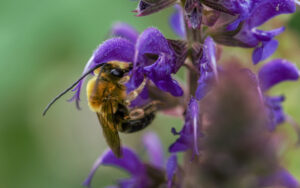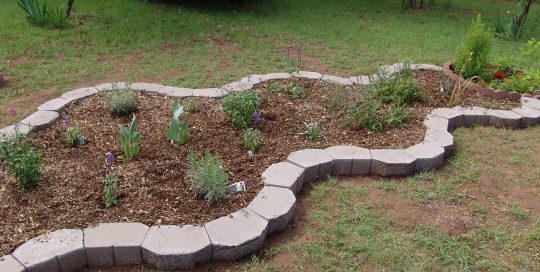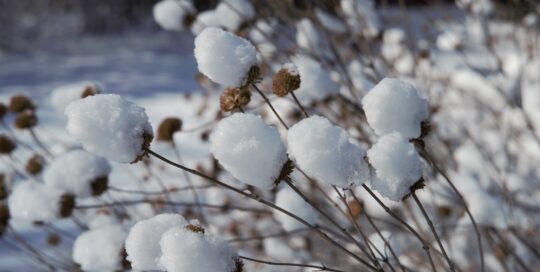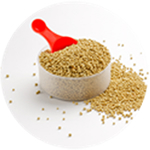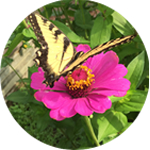Did you know that 70% of all bees nest underground? Well, don’t feel bad, neither did I until I started researching this blog. Mind you, I knew that many species, including some bumble bees, were ground nesters, but I didn’t know that the majority of all bees were reared underground. But looking at all the holes around my yard, combined with the many bees swarming my monarda fistulosa, I believe it. And I’m happy. Ground-nesting bees are some of the best pollinators, and they play a crucial role in maintaining the health of our ecosystems. Here’s how you can encourage them in your garden.
Why Ground-Nesting Bees?
Do you have native flowers or tomatoes and other new-world fruits and vegetables? Well, you want native bees, then. Native bees evolved with native plants and therefore are best at pollinating them. Tomatoes, for example, require buzz pollination, and honeybees don’t do it. Bumble bees and other native bees do. Despite their solitary nature, the collective pollination efforts of ground-nest bees are superior to that of European honeybees, assuming you have healthy populations.
Identifying Ground-Nests
Honestly, I thought I had ants. Lots of ants. But there weren’t ants on the anthills. That was the main clue that I wasn’t looking at anthills at all, but rather bee nests, with little mounds of excavated soil around the entrance. Unlike European honeybees, ground-nesting bees are solitary, with each female bee creating and tending to her own nest, starting in early spring. Sometimes, some species’ females will nest in proximity to each other, forming communities. Some species may even share an entrance to a nest site.
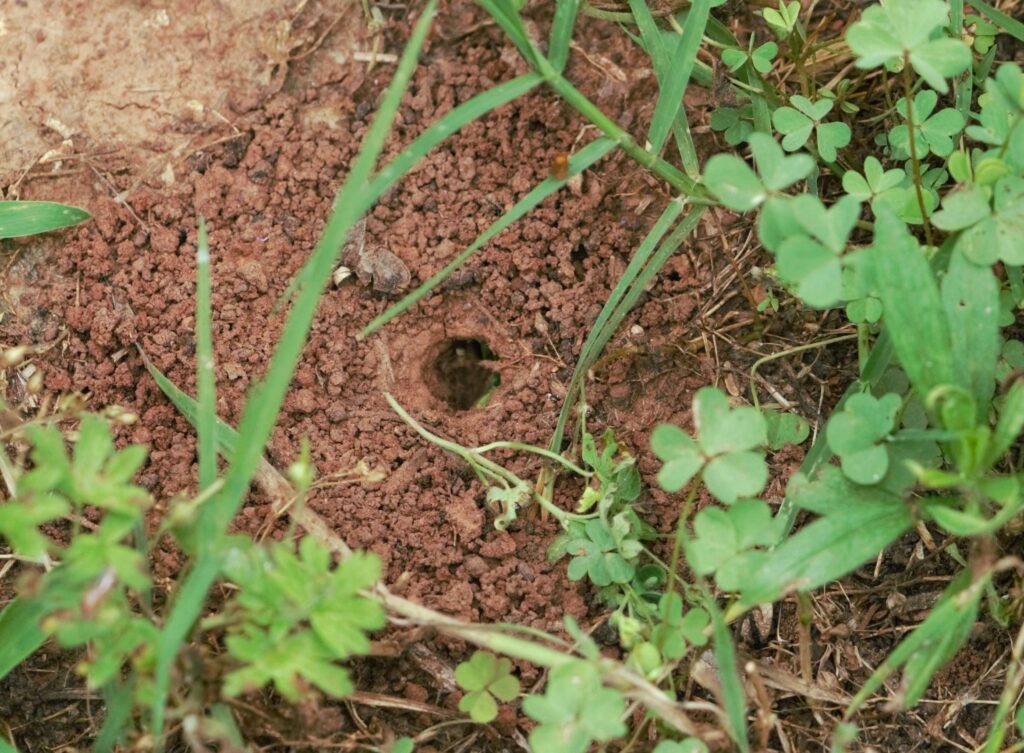
Though I didn’t see a bee entering, this is likely the entrance to a bee nest.
Entrances vary in size depending on the size of the bee. Bumble bees may use existing rodent burrows, like gopher holes, as a nest site. Sweat bee entrances may be tiny. If you’re lucky, you might catch a female bee returning with full scopa (pollen-carrying hairs on her legs or abdomen) to provision her nest.
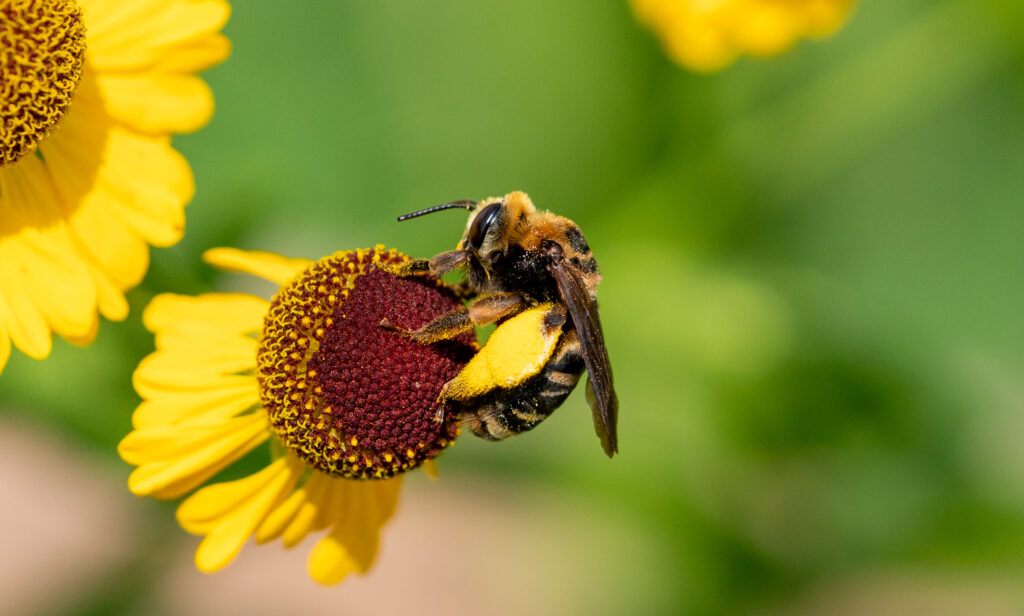
Female bee with leg scopa.
Species
There are many, many species of ground-nesting bees including:
- Mining bees (Andrenidae)
- Bumble bees (Apidae) (although they do not use burrows exclusively)
- Longhorm bees (Apidae)
- Sweat bees (Halictidae)
- Cellophane and plasterer bees (Colletidae)
This is certainly not a complete list, but these are some of the more common groups you might see in your garden.
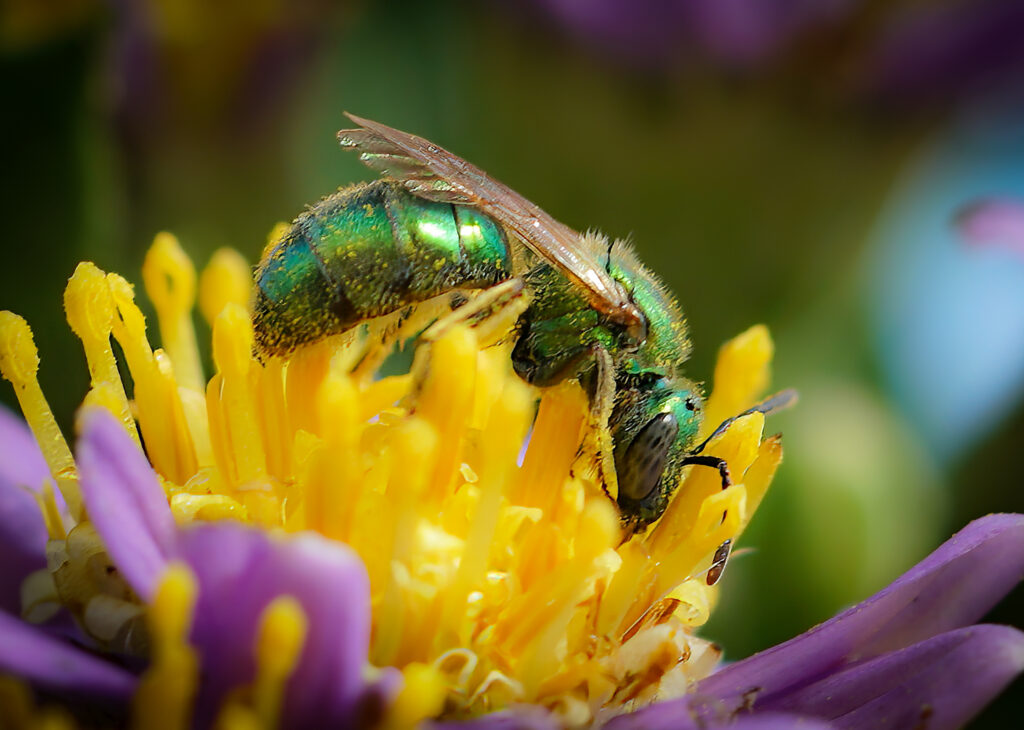
Sweat bees nest underground.
Creating a Bee-Friendly Habitat
Ground-nesting bees prefer areas with bare dirt, or at least patches of bare dirt. I found a colony of nests under a swath 0f cardboard I’d put down to choke out Bermuda grass. I have some in my yard where the grass doesn’t do well due to shade. Bees don’t nest in areas covered with mulch. So, it’s a good plan to leave some bare spots where you can. Perhaps leave a small pile 0f top soil in a corner or a sand pile stashed behind a shed. The areas need to be well-drained; I’ve never found nests in clay or low-lying spots.
If you’ve discovered a nest, leave it be. Solitary bees rarely, if ever, sting. Unlike ground-nesting wasps such as yellowjackets, these bees are not aggressive. Please don’t dig up nests, till the soil, or use pesticides around nest sites.
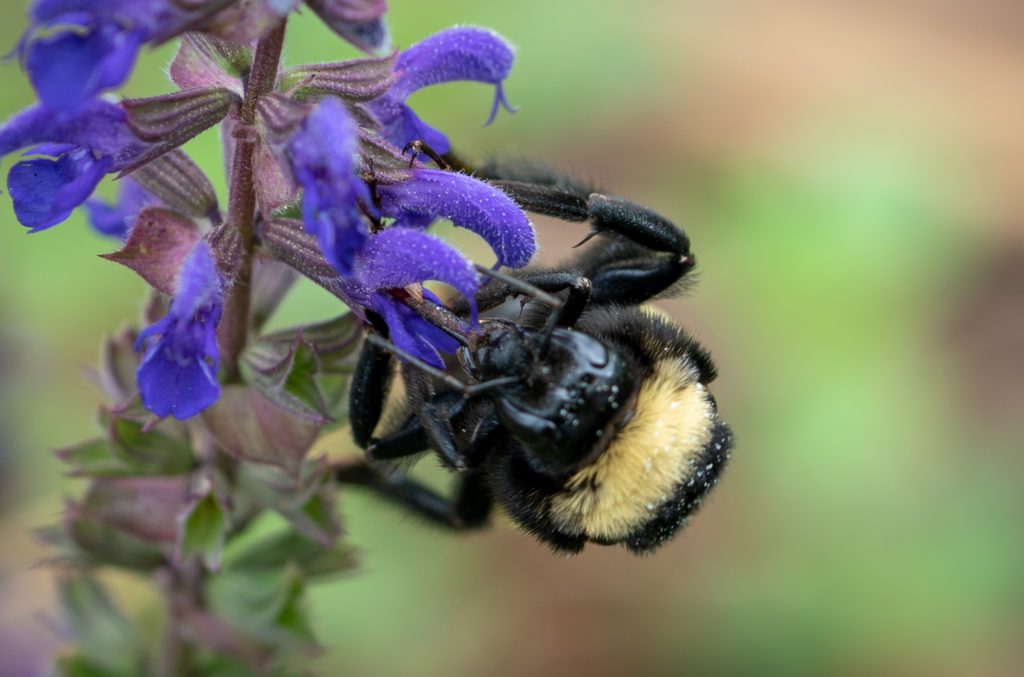
In all my years of sticking my camera in the face of native bees, I’ve never once been stung.
Plant native plants and ensure something is blooming all season. Earlier this spring, the bees were busy pollinating my salvia and penstemon. Now they’re on my monarda, coneflowers, and zinnia. Next month they’ll have liatris, and later this summer and fall, asters.
Some bees are so specialized, they only pollinate specific flowers. You may be familiar with specialist bees such as squash bees, rose mallow bees, and blueberry bees. So, planting native dogwoods, violets, spring beauties, goldenrods, and sunflowers may help the specialists in your area.
